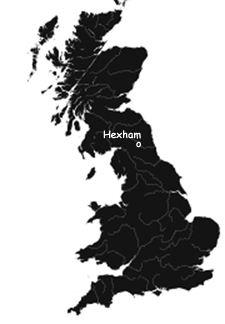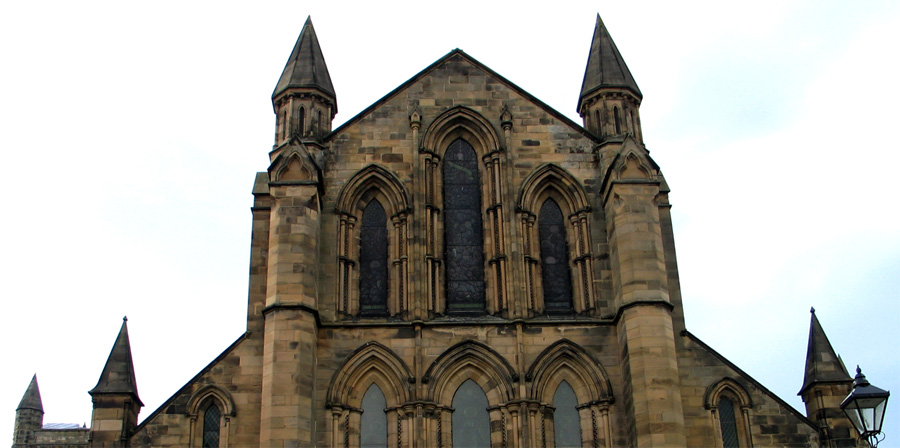 Hexham was founded as an abbey by St. Wilfrid of York in 674 A.D. on land given by the Northumbrian queen, St. Etheldreda.
When the Diocese of York was divided in 678, Hexham was made a bishopric, although, under its first bishop, St. Eata, it remained for a time united with Lindisfarne.
Of the eleven bishops of Hexham who followed St. Eata, six were saints, among them St. Wilfrid, St. Acca, and St. John of Beverley.
The Saxon crypt and apse still remain in today's church. The current church largely dates from Norman times (ca.1170–1250). Since the Dissolution of the Monasteries in 1537, the Abbey has been the parish church of Hexham.
About Hexham Hexham was founded as an abbey by St. Wilfrid of York in 674 A.D. on land given by the Northumbrian queen, St. Etheldreda.
When the Diocese of York was divided in 678, Hexham was made a bishopric, although, under its first bishop, St. Eata, it remained for a time united with Lindisfarne.
Of the eleven bishops of Hexham who followed St. Eata, six were saints, among them St. Wilfrid, St. Acca, and St. John of Beverley.
The Saxon crypt and apse still remain in today's church. The current church largely dates from Norman times (ca.1170–1250). Since the Dissolution of the Monasteries in 1537, the Abbey has been the parish church of Hexham.
About Hexham
Hexham Abbey Website
Wikipedia: Hexham Abbey
New Advent Catholic Encyclopedia: Hexham and Newcastle
Hexham Abbey Website: St. Wilfrid
New Advent Catholic Encyclopedia: St. Etheldreda
Hexham Abbey Website: St. Acca
New Advent Catholic Encyclopedia: St. Eata
St. John of Beverley Website
Wikipedia: Benedictines
Wikipedia: Augustinians
Journey to Hexham
Hexham Abbey is located off of the A69 or A695 in the city of Hexham in Northumberland, England.
Ordnance Survey Map (NY9340764166)
Visitors Information
Visitors information may be found at the Hexham Abbey website. General area tourist information may be found at the Hexham Net website.
Additional Photos of Hexham
Festival Banners at Hexham Abbey
View of Hexham Abbey from the East
East Front of Hexham Abbey
View of Hexham Abbey in 2004
View of Hexham Abbey in 2006
The Chancel and Sanctuary, Hexham Abbey
Vaulted Ceiling Leading to St. Wilfrid's Chapel, Hexham Abbey
Stained-Glass Window in St. Wilfrid's Chapel, Hexham Abbey
St. Acca's Cross (ca.740 A.D.), Hexham Abbey
7th Century Saxon Frith Stool, Hexham Abbey
1st Century Roman Tombstone to Standard Bearer Flavinus, Hexham Abbey
Stairs from the Crypt Leading Up to the Nave, Hexham Abbey
7th Century Anglo-Saxon Crypt, Hexham Abbey
Rosette Stone Carving from the Saxon Church, Hexham Abbey
Night Stairs in the South Transept, Hexham Abbey
|



